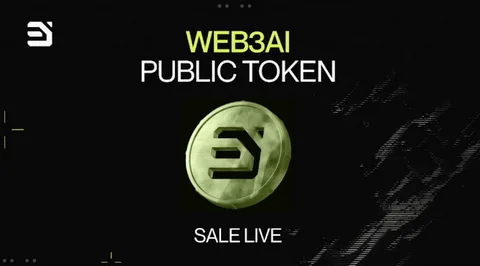Introduction
Cryptocurrency, once a fringe movement championed by tech enthusiasts and a few forward-thinking economists, has now entered the mainstream consciousness. For many, the term “Bitcoin” became synonymous with this financial revolution, serving as a gateway to the world of decentralized finance.
But in recent years, a new trend has emerged in the crypto market: the rapid rise of altcoins. These alternative cryptocurrencies have generated both excitement and skepticism as they surge in popularity and market value. The Altcoin Surge has become a defining feature of the modern crypto landscape, intertwining hope and opportunity for both seasoned traders and newcomers alike.
In this post, we will delve into the reasons behind this Altcoin Surge and explore its implications for the broader crypto market. We’ll investigate what drives this trend, the opportunities it presents, and the risks it harbors. Through a clear understanding of this surge, investors can better navigate the crypto space, making informed decisions based on both potential rewards and risks.
As we explore the complexities of altcoins, we’ll look at key factors such as market sentiment, technological innovation, and economic shifts. This blog will cover the essence of the altcoin market, the different categories of altcoins, the driving forces behind the Altcoin Surge, and how this dynamic interplay of hope and opportunity influences investor behavior.

1. Understanding the Altcoin Market
The term “altcoin” encompasses all cryptocurrencies that are not Bitcoin. Since the launch of Bitcoin in 2009, thousands of alternative cryptocurrencies have been created, each aiming to improve upon or offer a unique angle on the original model.
Ethereum, Litecoin, and Ripple are just a few of the well-known names that have gained significant traction over the years. The Altcoin Surge refers to the collective rise in the market capitalization of these coins, as more and more traders flock to them in search of the next big thing in the crypto market.
Altcoins are often designed to address perceived shortcomings of Bitcoin, such as scalability, transaction speed, or privacy. For example, Ethereum introduced the concept of smart contracts, a feature that allows developers to build decentralized applications (dApps) on its blockchain. This innovation has spurred an entire ecosystem of decentralized finance (DeFi) platforms, creating a new wave of opportunities for Altcoin Surge investors.
However, it’s not just the technological advancements that are driving the Altcoin Surge. A significant factor is the hope that many investors hold — the belief that these alternative cryptocurrencies could outperform Bitcoin and deliver massive returns. With lower market caps compared to Bitcoin, altcoins are often viewed as having higher potential for growth. This has resulted in speculative trading, with many hoping to “get in early” on the next Ethereum or Ripple.
The rapid rise in altcoin prices is also influenced by market cycles. As Bitcoin’s price climbs, traders often diversify their portfolios by investing in altcoins, causing a ripple effect throughout the entire crypto market. Conversely, when Bitcoin’s price declines, altcoins often follow suit. The interconnectedness of these assets underscores the volatility of the market, but also highlights the opportunity for traders to profit during periods of significant price swings.
2. Key Categories of Altcoins and Their Role in the Market
The world of altcoins is vast, with different coins serving different purposes within the crypto market. To better understand the Altcoin Surge, it’s important to categorize the types of altcoins and their respective use cases. Broadly speaking, altcoins can be grouped into the following categories:
- Utility Tokens: These altcoins are used within specific ecosystems to power applications, reward users, or pay for transaction fees. A prime example is Ethereum’s Ether (ETH), which is used to fuel smart contracts and dApps on the Ethereum network.
- Stablecoins: Designed to minimize price volatility, stablecoins are pegged to real-world assets such as the US dollar or gold. Tether (USDT) and USD Coin (USDC) are two of the most popular stablecoins. They provide liquidity and stability in an otherwise volatile market, making them an attractive option during market downturns.
- Privacy Coins: Coins like Monero (XMR) and Zcash (ZEC) prioritize privacy and anonymity. These altcoins use advanced cryptography to ensure that transaction details are obscured, offering users a higher level of security compared to Bitcoin’s relatively transparent blockchain.
- Governance Tokens: Decentralized autonomous organizations (DAOs) issue governance tokens to allow holders to vote on important decisions related to the development and governance of a protocol. Examples include Maker (MKR) and Compound (COMP). These tokens provide holders with influence over the future direction of the platform, incentivizing active participation within the ecosystem.
Each category of altcoin plays a distinct role within the crypto market, and understanding these distinctions is critical for investors looking to capitalize on the Altcoin Surge. By diversifying their holdings across various types of altcoins, traders can mitigate risk while positioning themselves to take advantage of different market opportunities.
The hope that fuels the altcoin market is also deeply tied to the belief that innovation in one of these categories could lead to the next breakthrough cryptocurrency, further driving demand and price increases.
3. Factors Driving the Altcoin Surge
The current Altcoin Surge can be attributed to a combination of factors, including market sentiment, technological advancements, and macroeconomic trends. These driving forces create both hope and opportunity for investors, but they also introduce a level of risk that must be carefully managed.
- Market Sentiment: Sentiment plays a critical role in the crypto market. When investors are bullish on the future of cryptocurrencies, they often look to altcoins as an avenue for higher returns. Social media platforms, online forums, and influencer endorsements can quickly drive demand for specific altcoins, causing prices to Altcoin Surge seemingly overnight. Conversely, negative news or regulatory crackdowns can lead to rapid price declines. This volatility is both a blessing and a curse for traders, as it creates significant profit potential but also introduces substantial risk.
- Technological Innovation: Many altcoins offer unique technological features that Bitcoin lacks, which can attract interest from developers and investors alike. Ethereum’s introduction of smart contracts revolutionized the blockchain space, and other Altcoin Surge have followed suit with their own innovations.
- For instance, Cardano (ADA) and Polkadot (DOT) are two examples of altcoins that aim to improve upon Ethereum’s scalability and interoperability issues. These innovations generate hope that one of these projects could become the dominant blockchain platform of the future, further fueling the Altcoin Surge.
- Institutional Investment: While Bitcoin has garnered significant attention from institutional investors, altcoins are also beginning to attract interest from hedge funds, venture capital firms, and even large corporations. The involvement of these institutional players lends credibility to the altcoin market and provides much-needed liquidity. As institutional money flows into altcoins, it further drives up prices and contributes to the ongoing Altcoin Surge.
- Macroeconomic Factors: The broader economic environment also plays a role in the rise of altcoins. With inflation concerns, currency devaluation, and uncertain economic conditions around the world, many investors are turning to cryptocurrencies as a hedge against traditional financial markets. The crypto market is seen by some as a safe haven, and altcoins, with their lower entry points and higher potential for growth, are particularly attractive in this context.
While these factors are driving the current Altcoin Surge, they also underscore the speculative nature of the market. Investors must weigh the hope of outsized returns against the inherent volatility and risks of altcoins.
4. Opportunities and Risks in the Altcoin Market
As with any investment, the Altcoin Surge presents both opportunities and risks. The rapid appreciation of many altcoins has attracted a wave of new traders, many of whom are eager to capitalize on the potential for quick profits. However, the volatility of the crypto market means that prices can swing wildly, and what goes up quickly can come crashing down just as fast.
One of the primary opportunities in the altcoin market is the potential for significant gains. Because many altcoins have lower market caps compared to Bitcoin, they can experience exponential price increases during bull markets. For example, Ethereum saw its price surge from just a few dollars in its early days to over $4,000 at its peak. Such dramatic price movements offer the promise of life-changing wealth for those who can time the market correctly.
Additionally, altcoins offer hope for investors who missed out on Bitcoin’s early rise. Many traders view altcoins as their chance to “get in early” on the next big thing in the crypto market. By investing in promising projects with innovative technologies, these traders aim to ride the wave of the Altcoin Surge to financial success.
However, the altcoin market is also rife with risks. Many altcoins are speculative in nature, with little to no real-world use case or adoption. This has led to the proliferation of so-called “pump and dump” schemes, where the price of a coin is artificially inflated by coordinated buying before being rapidly sold off, leaving unsuspecting investors with significant losses. The hope that drives the altcoin market can quickly turn into despair if a coin’s price collapses.
Regulatory risk is another factor to consider. Governments around the world are still grappling with how to regulate cryptocurrencies, and new laws or crackdowns could negatively impact the altcoin market. For example, increased scrutiny on privacy coins could lead to their delisting from major exchanges, drastically reducing their liquidity and value.
Conclusion
The Altcoin Surge is a fascinating phenomenon that encapsulates the intersection of hope and opportunity in the crypto market. For some, it represents the promise of financial freedom and the chance to capitalize on the next big innovation in blockchain technology. For others, it’s a cautionary tale of the risks and volatility inherent in speculative investments.
As we’ve explored in this blog post, altcoins offer a diverse range of use cases, from smart contracts and decentralized finance to privacy and governance. The factors driving the Altcoin Surge—market sentiment, technological innovation, institutional investment, and macroeconomic trends—create both opportunities for significant gains and risks of equally significant losses.
Whether you’re a seasoned crypto trader or someone just dipping their toes into the crypto market, it’s essential to approach altcoins with both optimism and caution. The hope for the next big altcoin winner is always present, but so too are the risks.
What are your thoughts on the Altcoin Surge? Have you invested in altcoins, or are you still exploring the market? Share your experiences and insights in the comments below! Let’s keep the conversation going.






